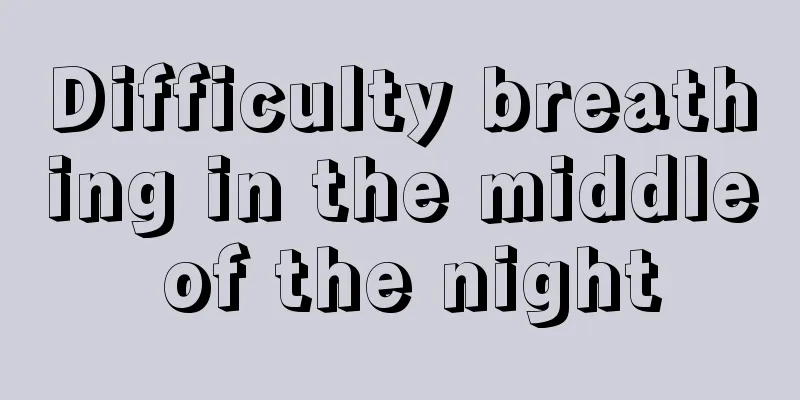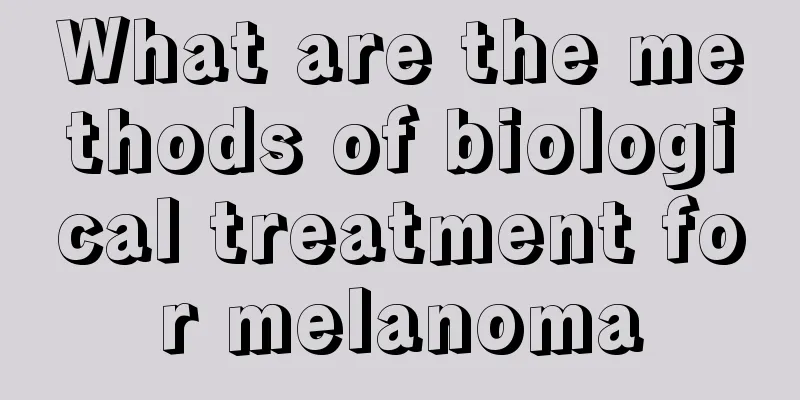Difficulty breathing in the middle of the night

|
Difficulty breathing and a feeling of shortness of breath in the middle of the night are the main symptoms of paroxysmal nocturnal dyspnea. This symptom is caused by a variety of causes, such as increased pulmonary congestion, high ventilation resistance, low nerve reflex sensitivity and various types of heart disease, which can lead to the occurrence of this symptom. Next, we will introduce the causes, differential diagnosis methods and examination items of breathing difficulties in the middle of the night. 1. Causes and common diseases 1. Mechanism of occurrence (1) Aggravated pulmonary congestion: After the patient lies flat on his back to sleep, the venous blood return in the lower body increases. In addition, the edema fluid that has accumulated in the interstitial spaces of sagging tissues due to gravity during the day also flows back into the blood due to changes in body position. Therefore, the pulmonary congestion and edema are significantly aggravated. (2) High ventilation resistance: When falling asleep, the tension of the vagus nerve center increases, the bronchial caliber becomes smaller, and the ventilation resistance increases. (3) Low sensitivity of nerve reflexes: The sensitivity of nerve reflexes decreases during deep sleep. Therefore, only when pulmonary congestion develops to a more serious level can it stimulate the respiratory center, causing sudden onset of dyspnea, forcing the patient to sit up and breathe through the mouth. 2. Common diseases Such as rheumatic heart disease, hypertensive heart disease, coronary artery sclerosis and so on. 2. Differential Diagnosis 1. Paroxysmal nocturnal dyspnea can be relieved within a few minutes after sitting up in mild cases, but some are accompanied by paroxysmal coughing and foamy sputum. If accompanied by asthma, it can be called cardiac asthma. 2. Paroxysmal nocturnal dyspnea can develop into pulmonary edema in severe cases, manifested as severe dyspnea, breathing 40 to 50 times per minute, sitting up to breathe, frequent coughing, often coughing up foamy sputum, accompanied by irritability, cyanosis of lips, and profuse sweating. 3. Inspection 1. Physical examination (1) The patient’s body position, demeanor, and mental state. Orthopnea is seen in left heart failure and severe bronchial asthma; lying on the affected side is common in pleural effusion; panic and agitation are seen in pulmonary edema; painful expression when palpating the chest is seen in acute myocardial infarction. Severe carbon monoxide or cyanide poisoning, severe acidosis, or pulmonary encephalopathy often result in varying degrees of impaired consciousness. (2) Changes in respiratory rate, rhythm, and depth, and the presence or absence of the three-depression sign. Deep and rapid breathing is seen in diabetes or uremic acidosis; shallow breathing is seen in emphysema, respiratory muscle paralysis or overdose of sedatives; Cheyne-Stokes respiration is seen in cerebral arteriosclerosis or increased intracranial pressure. (3) Check whether the jugular vein is distended, the shape and expansion of the chest, and pay attention to whether there is chest deformity, asymmetry, or chest wall tenderness. (4) Whether there are any signs of lung and pleural lesions. Check for paradoxical chest and abdominal movements or asymmetric respiratory movements on both sides, dullness or tympanic sound on percussion, dry or wet rales, and abnormal breath sounds. (5) Whether there are any signs of heart disease or heart failure. Pay attention to the presence of cardiac enlargement, abnormal heart sounds, and pathological murmurs. (6) Whether there is a large amount of ascites or signs of dehydration. (7) The presence or absence of cyanosis, clubbing, and lower limb edema. 2. Auxiliary examination (1) General examination: including blood biochemistry, electrolytes, urine routine, electrocardiogram, etc. (2) X-ray examination: enlargement of the left ventricle, enhancement of the hilar shadow, and cloud-like shadows in the lungs when pulmonary edema occurs. (3) Echocardiography: Evaluate the systolic and diastolic functions of the heart; identify underlying heart disease and factors that may affect heart failure. (4) Others: radionuclide examination, cardiopulmonary oxygen exercise test, cardiac catheterization and coronary angiography. |
<<: Feeling nauseous and wanting to vomit in the middle of the night
>>: No medicine to save yourself from diarrhea in the middle of the night
Recommend
Chest pain after colonoscopy
The stomach and intestines are the human digestiv...
My face is wrinkled after applying the ointment
Most people pay great attention to the beauty of ...
Why are my arms weak and limp?
After waking up after sleeping late, some people ...
How can hepatitis B patients prevent liver cancer
Liver cancer is a huge threat to human health, bu...
What causes pain in the nose?
Normally, many people feel very uncomfortable, an...
What to do if you have a bloated stomach? Solutions to bloating
Abdominal bloating is a very common symptom. Over...
The difference between latex pillow and memory pillow
A latex pillow is a pillow made of latex, which c...
The difference between salad oil and rapeseed oil
Salad oil and rapeseed oil are two different type...
What are the clinical symptoms of uterine cancer
In recent years, uterine cancer has become one of...
Is garlic acidic or alkaline
We all know that although garlic has a strong sme...
The method of stewing chicken with Panax notoginseng root actually has such medicinal value
It is not uncommon to see chicken stewed with Pan...
What are the hazards of liver puncture for liver cancer
Liver puncture is a liver tissue biopsy. It is ve...
Can I drink soy milk when I have a cough? It turns out this is the case
Coughing is a common phenomenon in daily life, an...
What is the most effective way to treat hemangioma?
Hemangioma is a benign tumor disease. The cause o...
Can soapy water remove bacteria?
We use our hands to do various things every day, ...









